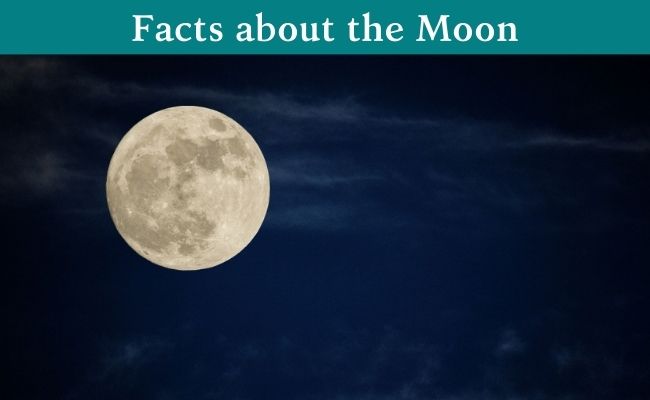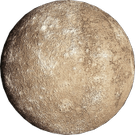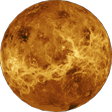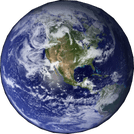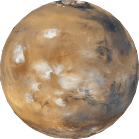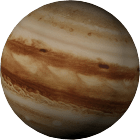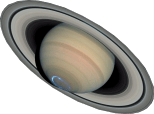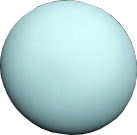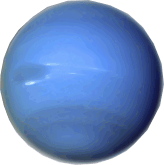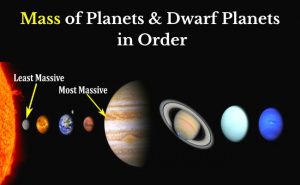The moon is the earth’s natural satellite and the 5th largest satellite in our solar system. It was formed 4.5 billion years ago and has almost the same age as the earth has. It is as much responsible as the sun for life on the earth. Check the list of most interesting moon facts below.
The moon is the 2nd brightest object in the sky after the sun. The Romans called it ‘Luna’ whereas Greeks called it by the name ‘Selene’.
The moon rotates around the earth in an orbit and the earth rotates around the sun, so we can indirectly say that both (moon and earth) rotates around the sun. Let’s explore more interesting facts about the moon:
Physical Moon Profile
- Mass = 7.3 × 1022 kg
- Mean Diameter = 3475 km
- Volume = 2.2 × 1010 km3
- Mean Density = 3.3 gm/cm3
- Surface Gravity = 1.62 m/sec2
- Escape Velocity = 2.38 km/sec
Facts about the Moon
⇒An increasing distance of the moon
The distance between the moon and earth is increasing slowly. The average distance between the moon and earth is 384400 km. It is drifting away almost 3.8 cm every year from the earth.
Must Check:- Earth to Moon Distance (in km, miles, AU, and light-years)
⇒The size of the moon and sun looks the same in the sky
When we saw in the sky and look at the moon, the apparent size of it is the same as the sun has. This is because the distance of the sun is much more from the earth than the distance between the moon and the earth. The distance between the moon and the sun is around 150 million kilometers, which is 400 times the distance between the moon and earth.
(Read about:– Facts of the Earth)
⇒Only one side of the moon can be seen
The moon always faces the same side of the earth. This is because its axial rotation takes almost the same time as it rotates around the earth’s orbit. The moon completes one rotation around the orbit of the earth in 27.3 days, so almost the same days it takes to rotate around its own axis. We can only see a maximum of 59% of the moon from the earth.
⇒The moon looks different in size daily (phases of the moon)
Around a whole month, if we see the moon it looks different in size daily. These different sizes are called phases of the moon or the ‘lunar phase’. Actually, the moon doesn’t change its real size but it looks like this to us over a period of a month. The moon reflects the sunlight that can be seen from the earth. Mainly there are 8 phases that the moon has:
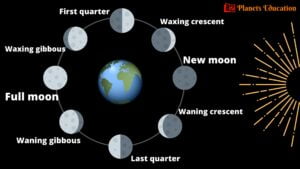
1. New moon
In this phase, we can not see the moon because the lit portion of the moon faces the sun’s side. The moonrise and moonset time is 6 am to 6 pm. A solar eclipse can occur only on a new moon day.
2. Waxing crescent
In this phase, we can see only 1/8th lit portion of the moon. The moonrise and moonset time is 9 am to 9 pm.
3. First quarter
Here moon’s 1/4th lit portion can be seen from the earth. The moonrise and moonset time is Noon to Midnight.
4. Waxing gibbous
In this phase, 1/2 portion can be seen from the surface of the earth. The moonrise and moonset time is 3 pm to 3 am.
5. Full moon
In this phase, we can see a total of one face( almost 59% of the total moon’s surface) of the moon clearly. Here the moonrise and moonset time is 6 pm to 6 am. A lunar eclipse can only occur on a full moon day.
6. Waning gibbous
This is the mirror phase of the waxing gibbous, so only 1/2 portion can be seen. The moonrise and moonset time is 9 pm to 9 am.
7. Last quarter
This is the mirror phase of the ‘first quarter’ and only 1/4th portion can be seen in this phase. The moonrise and moonset time is midnight to noon.
8. Waning crescent
This phase is the mirror of the ‘waxing crescent’ and can be seen 1/8th portion from the earth. The moonrise and moonset time is 3 am to 3 pm.
So after the waning crescent phase again new moon comes and this circle goes on throughout the whole month.
⇒Once the moon was a part of the earth
Astronomers have a hypothesis for the origin of the moon. This hypothesis is called the ‘giant impact hypothesis’. According to this, around 4.5 billion years ago a very large size planet collides with the earth. Its size was almost the same size as our planet Mars has and this planet called “Theia” by astronomers. After this collision earth breaks into some smaller parts and these parts gathered together due to gravity around the earth. Due to the earth’s gravitational pull, it starts rotating around the earth into an orbit and thus formed a moon.
⇒Practically no atmosphere on the moon
In reality, there is an atmosphere on the moon called the ‘lunar atmosphere’. The atmosphere of the moon consists of some unusual gases like Neon, Argon-40, Polonium-210 including sodium and potassium in the atmosphere. In comparison to the earth’s atmosphere, its pressure is 3 × 10-15 atm, which is too low. The weight of the whole lunar atmosphere is less than 10 tonnes. So in comparison to earth practically we can say there is no atmosphere.
⇒Less gravity and less weight on the moon
The acceleration due to gravity “g” of the moon is 1.62 m/sec2, which is almost 1/6th of the earth’s gravity. Because of this fact, the weight on the moon of any object weighs much less. Since we know mathematically, weight is the product of mass and gravity. So if your weight is 98 N (normally we say it ‘98 kg’) on earth then your weight on the moon would be almost 16 N (16 kg).
⇒Moonquakes
Like earthquakes, moonquakes also happen on the moon. This occurs due to the effect of the earth’s gravity on the moon. Usually, moonquakes last longer than earthquakes.
⇒Earth’s ocean tides happen because of the moon
As we know half of the moon always faces the earth, this is called tidal locking of the moon. The front face of the earth towards the moon caused more gravitational pull, whereas the opposite side of the earth caused less gravitational pull. These differences between gravitational pulls cause tidal forces on both sides of the earth. Because of this tidal force oceans of the earth create low and high tides.
⇒Most explored space object by humans outside on earth
Moon is the most explored object in the universe after earth by humans. The 1st man who stepped foot on the moon was Neil Armstrong on the mission of Apollo 11. Edwin Aldrin was the 2nd person who steps his foot on the moon joined Neil Armstrong on the same mission Apollo 11.
So, here we got to know some of the interesting information and facts about the moon. This is our (earth’s) natural satellite. Below, you can find information about other satellites in our solar system.
Related:-
- Total Number of Moons in the Solar System
- Mars Moons: Phobos and Deimos
- Jupiter Moons: Facts, Names, Numbers & List
- Saturn Moons: Number, Names, and Facts
- Uranus Moons: Names, Numbers, and List
- 14 Neptune Moons: Names, Number, and List
- 5 Best Solar System Backpacks in 2024
- Mass of Planets in Order from Lightest to Heaviest
- Star Projector {2024}: Star Night Light Projector
